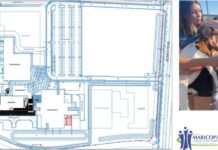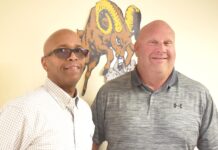
In January 2016, I began this education column with two purposes. First, provide readers with new ideas about teaching and learning through the lens of my 40-plus years of classroom teaching. Second, inform citizens about the improving environment in Maricopa schools.
Now, to simplify life and reduce travel time, I am moving to Sun Lakes. This will be my final column for the magazine.
In 2016, many Maricopans had low regard for their public school district. Scores of parents sent their children on buses to Tempe and Kyrene for a “better” education. New programs, with the goal of providing a superior education for MUSD students, have been initiated and
– the results are promising. Fewer children are riding those buses as parents realize the improvement and overall quality of today’s education.
I hope, in some way, my writing has added to the public understanding of the elevated quality of learning in MUSD classrooms.
I have written about one topic I feel the need to take this opportunity to write about again. My career has been spent teaching mathematics in all grades and to all ability levels. I continue to be concerned about the need to re-evaluate how math is taught in grades three through five.
Unlike language arts, social studies and science, mathematics is a cumulative subject; students cannot learn new material if they have not mastered the previous topics. Yet, most elementary math classes are taught in a mixed ability grouping, which is counterproductive to advanced, as well as remedial, students.
For the past six years, I have taught, as a volunteer, at Butterfield Elementary School, primarily in fifth grade. Students who did the required work covered what amounted to a little over two years of mathematics, culminating in topics usually introduced in seventh grade. A doctorate in math is not required to teach an advanced class, but confidence in one’s ability is needed to learn.
Students who have successfully completed this Advanced Math class can accelerate in middle and high school, taking math courses in 11th and 12th grades for college credit. In the 21st century, mathematical knowledge is required in technology careers and is vital to become a critical consumer of data.
My last words in this column are to ask that every MUSD elementary school have an Advanced Math class.
– Murray Siegel has more than 44 years of teaching experience and volunteers at Butterfield Elementary School.
– This content was first published in the July edition of InMaricopa magazine.












![Alleged car thief released without charges Phoenix police stop a stolen vehicle on April 20, 2024. [Facebook]](https://www.inmaricopa.com/wp-content/uploads/2024/04/IMG_5040-218x150.jpg)

![MHS G.O.A.T. a ‘rookie sleeper’ in NFL draft Arizona Wildcats wide receiver Jacob Cowing speaks to the press after a practice Aug. 11, 2023. [Bryan Mordt]](https://www.inmaricopa.com/wp-content/uploads/2024/04/cowing-overlay-3-100x70.png)



I would like to reach out to Dr. Siegel…
As a former student of his, and a current math educator, I wanted to let him know how much he colored my school experience in a way that shaped the trajectory of my entire life in the most positive of ways.
This article rings in tune with my own philosophy of the importance of interventions for students that have facility beyond mastery of the curriculum material.
I guess I shouldn’t be surprised at this congruence in philosophy, as he was my teacher for 5 years, but I’m sure he is not aware just how much influence he had on me. I only hope to affect any of my students in the same manner he was able to for me.
THANK you, Dr. Siegel!